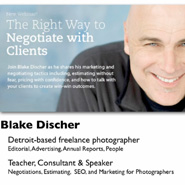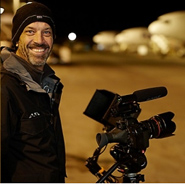How One Photographer Is Beating the Economy
 On one of the professional forums I read daily, there is a conversation about the lousy state of the industry, how clients are hiring based only on price, how protecting one’s intellectual property rights has cost clients, how competitors are charging less and giving more, and blah, blah, blah. It’s the usual bitching and moaning that happens in any economic downturn when photographers: 1) are selling a product that a buyer can obtain elsewhere for less; or 2) are inadequately conveying their value-add to their clients; or 3) have clients that don’t care about the additional “value” the photographer adds to a project.
On one of the professional forums I read daily, there is a conversation about the lousy state of the industry, how clients are hiring based only on price, how protecting one’s intellectual property rights has cost clients, how competitors are charging less and giving more, and blah, blah, blah. It’s the usual bitching and moaning that happens in any economic downturn when photographers: 1) are selling a product that a buyer can obtain elsewhere for less; or 2) are inadequately conveying their value-add to their clients; or 3) have clients that don’t care about the additional “value” the photographer adds to a project.
 Michael Albany, a Philadelphia photographer specializing in architecture and portrait photography offered up some valuable insight that I think can help to inspire other photographers. He wrote:
Michael Albany, a Philadelphia photographer specializing in architecture and portrait photography offered up some valuable insight that I think can help to inspire other photographers. He wrote:
I totally understand the fact that the old grey mare ain’t what she used to be and that our industry is A) in a total state of flux, and B) that the market is becoming saturated with too many Uncle Bobs but I have to say that I am so tired of hearing people whine about it. So you want to charge less or leave ASMP because they don’t [fit] your agenda, bye. Have a nice day.
I joined ASMP to learn and to grow and guess what, I am. Is it the end all to be all? Nope. Is my photography business where I want it to be? Well if you don’t know my name then no, it’s not. Is it growing? Yes.








 groozi.com is a blog about negotiating and web marketing. Weekly posts are written primarily by me, Blake J. Discher, a
groozi.com is a blog about negotiating and web marketing. Weekly posts are written primarily by me, Blake J. Discher, a 
